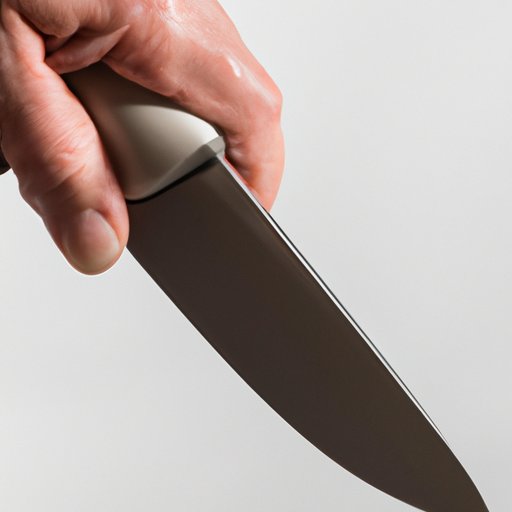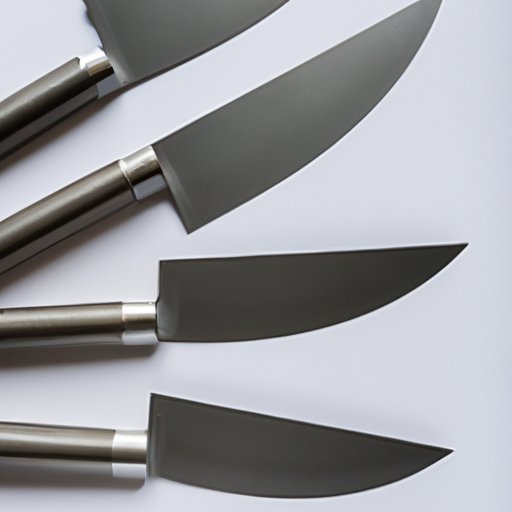The Ultimate Guide to Sharpening Knives
A knife is an essential tool in any kitchen, but a dull knife can do more harm than good. It’s important to keep your knives sharp to ensure they perform at their best and to reduce the risk of accidents. However, sharpening a knife can seem daunting, especially for beginners. In this ultimate guide, we’ll cover everything you need to know about sharpening knives, from basic techniques to expert tips.
Section 1: The Beginner’s Guide to Sharpening Knives at Home
Sharpening a knife at home is easy and requires minimal equipment. The basic equipment you’ll need includes a sharpening stone, honing steel, or an electric sharpener. Using a sharpening stone is a great way to sharpen your knives manually.
First, choose the right grit of stone. A coarse grit should be used for dull or damaged blades, while a fine or extra-fine grit should be used for honing. Place the stone on a stable work surface and hold it with one hand. With the other hand, hold the knife at a 20-degree angle against the stone. Draw the knife across the stone using a sweeping motion. Repeat this process on the other side of the blade.
Using a honing steel is another way to maintain your knife’s sharpness. Hold the steel vertically and make sure it’s firmly anchored on a stable surface. With the knife in your other hand, hold the blade at a 20-degree angle against the steel. Draw the blade down the steel from the base to the tip. Repeat this process for the other side of the blade.
An electric sharpener is a great option for those looking for a quick and easy way to sharpen their knives. To use, simply place the blade in the slots and follow the manufacturer’s instructions.
Section 2: The Pros and Cons of Different Knife Sharpening Techniques
There are a variety of knife sharpening methods available, each with its own pros and cons. Using a sharpening stone gives you complete control over the sharpening process, but requires skill and practice to master. An electric sharpener is quick and easy, but can be expensive and may not give you as much control as a sharpening stone. Honing steels are a great way to maintain your blade’s sharpness between sharpenings, but won’t sharpen a dull knife.
Consider your needs and skill level when choosing a sharpening method. If you’re just starting, using a sharpening stone might be the best option. If you’re short on time, an electric sharpener might be a better choice.
Section 3: 5 Mistakes to Avoid When Sharpening Knives
Sharpening a knife can be tricky, and there are many common mistakes to avoid. One of the most common mistakes is using too much pressure when sharpening, which can damage the blade. Another mistake is using the wrong angle, which can result in a blade that’s not sharp enough. Other mistakes include not properly cleaning the blade, not sharpening both sides evenly, and using a dull knife as a starting point.
To avoid these mistakes, start with a sharp knife, use light pressure, sharpen at the correct angle, and clean your knife regularly.
Section 4: How to Sharpen Serrated Knives
Serrated knives require a different sharpening technique than straight-edged knives. The best tool to use for sharpening serrated knives is a tapered round sharpening rod.
First, hold the rod at the serrations’ base and match the angle of the serrations with the rod. Draw the rod through each serration in a curved motion, making sure to match the angle of the serration. Repeat this for all the serrations.
Sharpening a serrated knife might seem daunting, but with practice, it can be done easily.

Section 5: The Importance of Maintaining a Sharp Knife
Keeping your knives sharp is crucial for good performance and safety. A dull knife requires more force to cut through food, which can lead to accidents. Additionally, a sharp knife produces cleaner and more precise cuts, which can enhance the quality of your dishes.
Not maintaining a sharp knife can also impact your knives’ lifespan. A dull blade can cause damage to the cutting edge, which can result in the blade losing its sharpness faster.
Section 6: Expert Tips for Sharpening Knives
Professional chefs and butchers sharpen knives regularly and have plenty of tricks up their sleeves. One of the most common tips is to use a consistent angle when sharpening your knives.
Another tip is to make sure you’re using a suitable sharpening tool for the type of knife you’re sharpening. Different knives require different grits of sharpening stones.
It’s also essential to take your time when sharpening your knives. Remember to use light pressure and avoid rushing through the process.
Conclusion
Sharpening a knife might seem daunting, but with the right tools and techniques, it’s an easy process. Keeping your knives sharp is essential for good performance and safety in the kitchen. Remember to avoid common mistakes, choose the right sharpening tool for your needs, and take your time.
